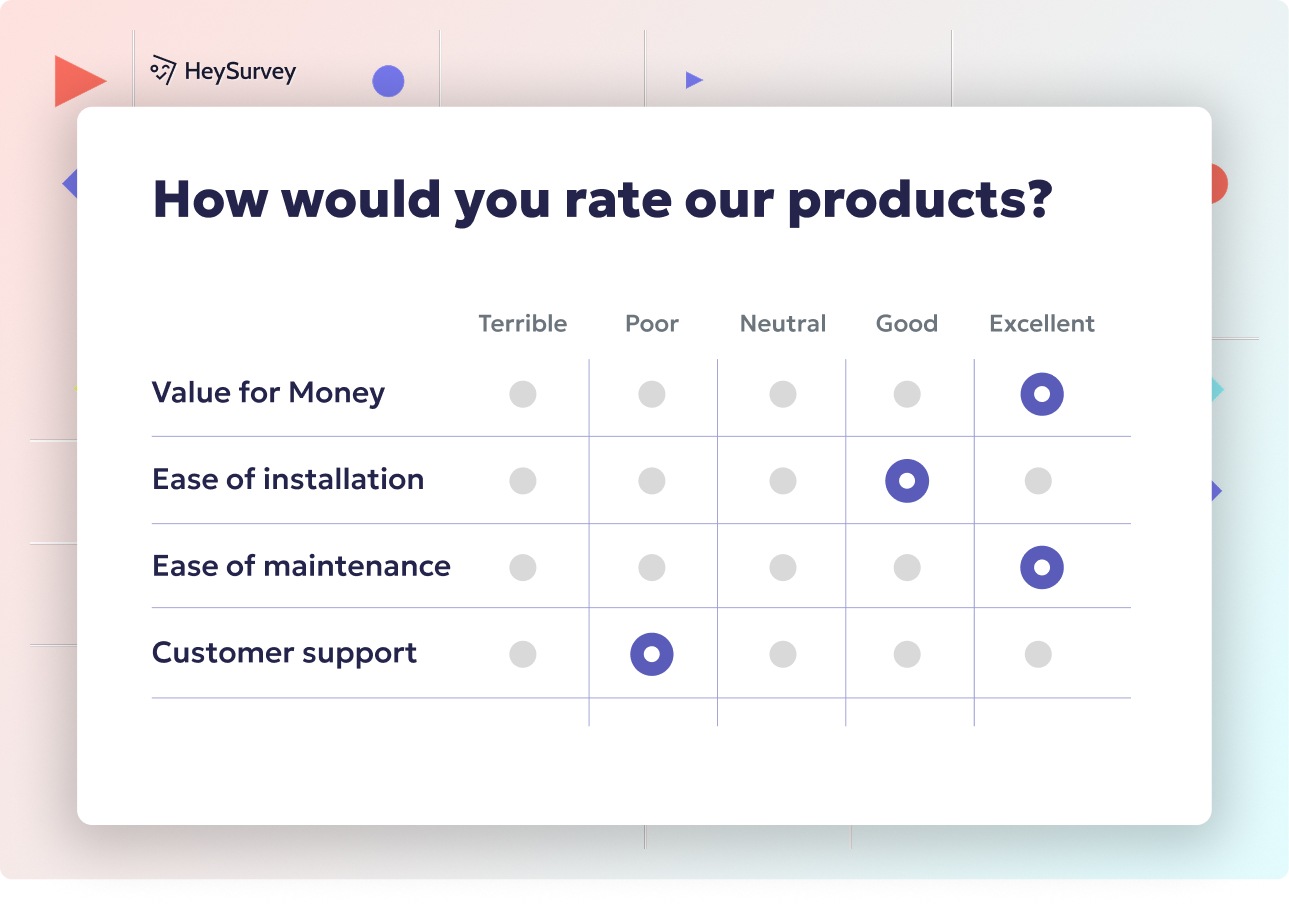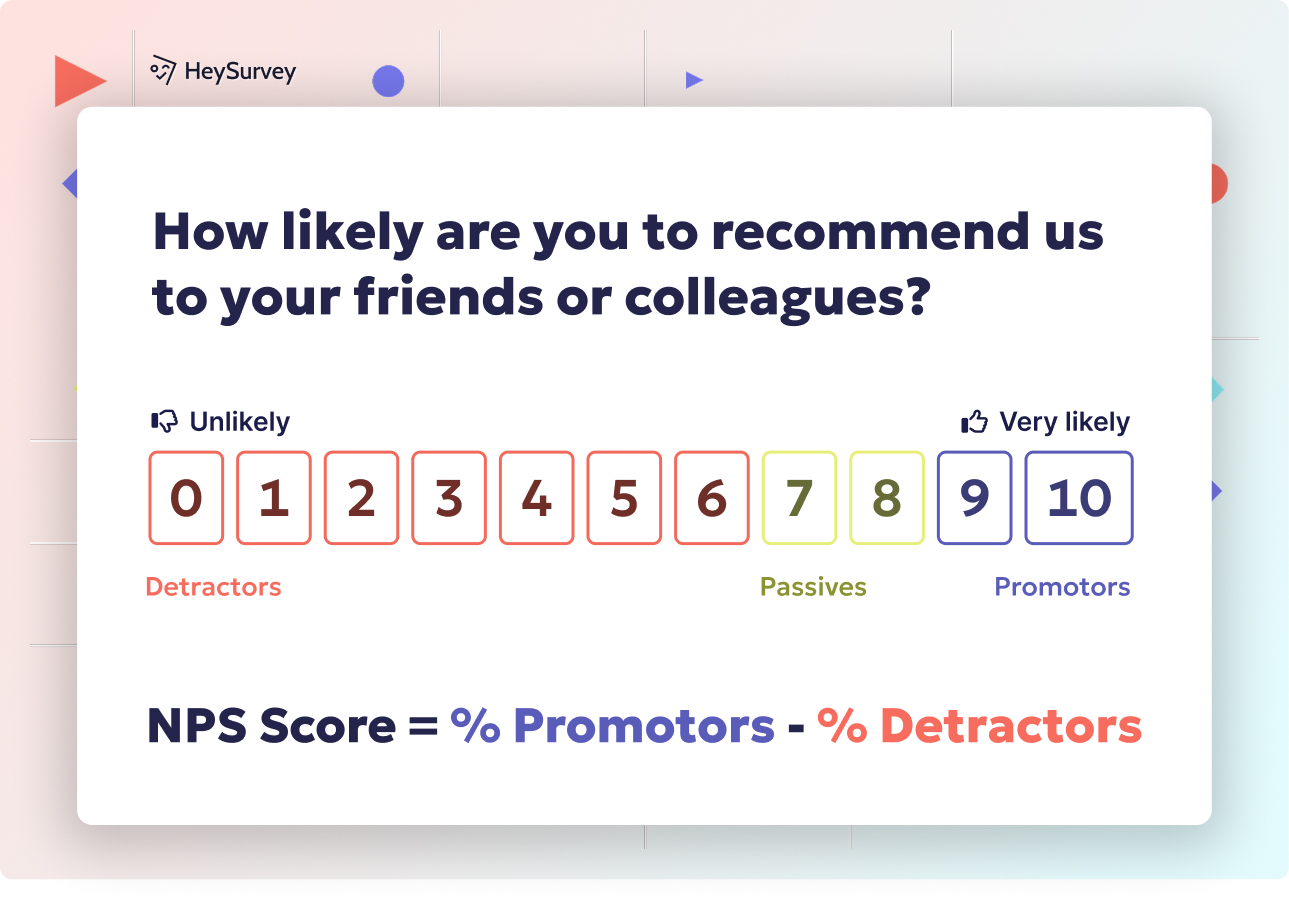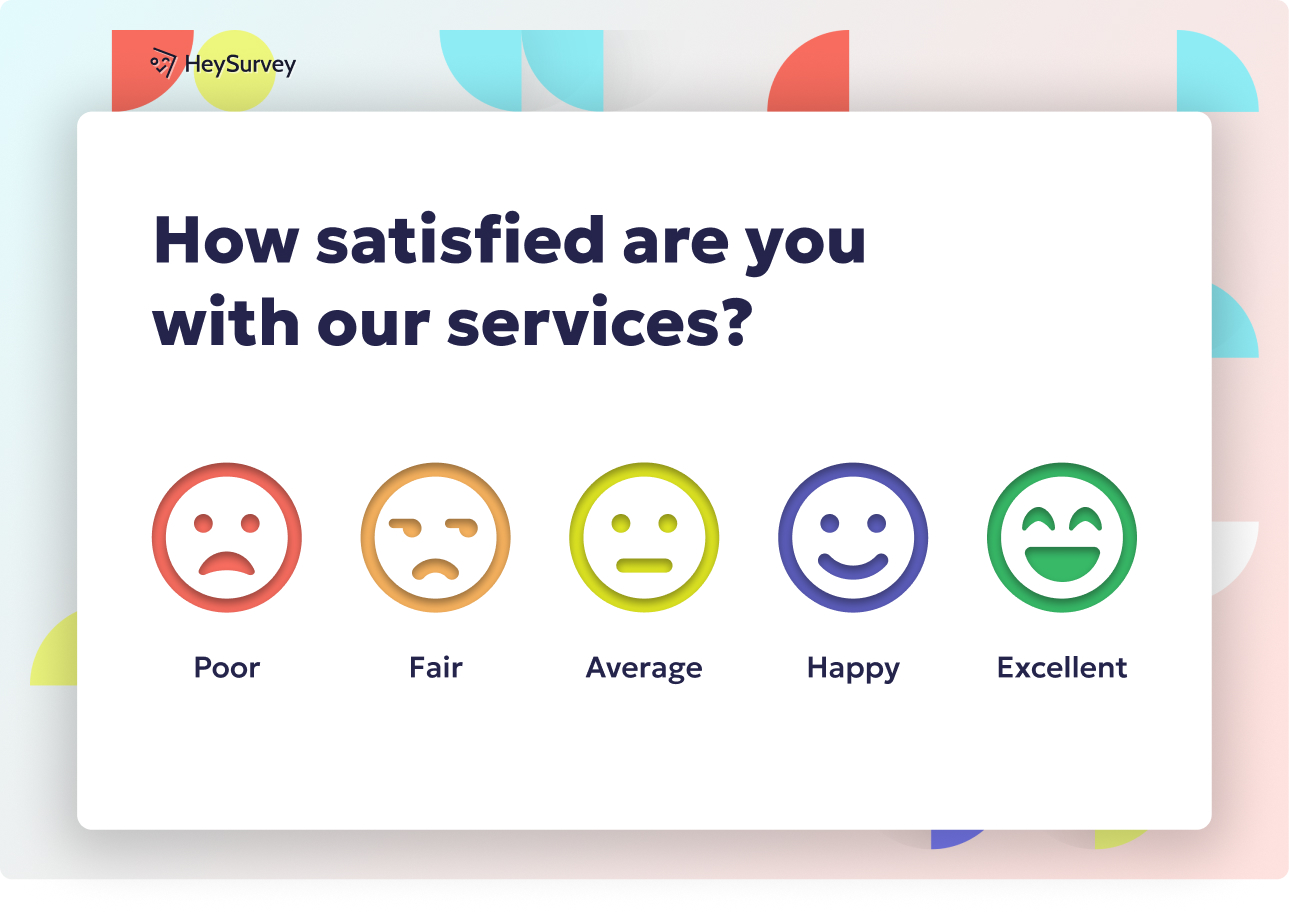32 Teacher Perception Survey Questions for School Improvement
Explore 30 insightful teacher perception survey questions, covering school climate, PD needs, leadership, curriculum, behavior, tech, and equity.
When educators have a chance to share their honest opinions, schools thrive. A well-designed teacher perception survey opens a window into the collective wisdom of the staff room, helping leaders fine-tune everything from policy to playground culture. Whether post-professional development or during a campus transformation, these handy tools give voice to the people who matter most: the teachers.
School Climate Perception Survey
The Teacher View on School Climate
There’s more to school climate than saying “hello” in the halls or posting mission statements. From the teacher’s perspective, school climate pulses through daily interactions and shapes job satisfaction. Think about safety in the lunchroom, warmth in the faculty lounge, and support when times get tough. It’s about the sense of “we’re in this together.” Teachers who feel included and secure are far more likely to stick around, put in extra effort, and cultivate positive relationships with students.
When to Ask About School Culture
Curious about teacher staff culture? Certain moments are ideal for digging into climate:
- Annually, to track how school morale shifts from year to year
- During times of staff turnover, to spot brewing issues before they escalate
- After changes to leadership or policies
- In the bleak midwinter, when spirits may be flagging
A targeted school climate survey for teachers helps administrators tune in to real experiences, not just guesswork.
Sample Questions for a School Climate Survey
How safe do you feel in common areas of the school?
To what extent do staff members treat each other with respect?
How effectively does the school address bullying among students?
How comfortable are you voicing concerns to leadership?
Rate the overall sense of community within the staff.
Strong survey results here can spark concrete action—maybe more support, maybe just more donuts at staff meetings. Either way, perspective counts!
Poor support from administration, student discipline problems, and lack of decision-making involvement are linked to higher teacher turnover rates. (en.wikipedia.org)

Creating a teacher perception survey with HeySurvey is easier than you think! Even if you’re brand new, follow these simple steps to get your survey up and running in no time:
Step 1: Create a New Survey
- Visit the HeySurvey website and log in or continue without an account for trial creation.
- Click on “Create New Survey.” You can start from scratch, but for teacher perception surveys, using a pre-built template is the fastest way to go.
- Pick a template that fits your needs (for example, one focused on teacher feedback or school climate), or start with a blank survey to customize fully.
- Give your survey a clear name that helps you find it later, like “2024 Teacher Perception Survey.”
Step 2: Add Your Questions
- In the Survey Editor, you’ll see options to Add Question anywhere you want. Use this to build your survey question by question.
- Choose question types based on the kind of data you want: multiple choice, scale ratings, or open text for detailed answers.
- Copy and paste your teacher perception survey questions (from climate to curriculum to tech use) into the question boxes.
- Mark essential questions as required so teachers can’t skip them accidentally.
- Enhance questions by adding images or descriptions if you want to clarify or spruce things up.
Step 3: Publish Your Survey
- When your survey feels ready, hit the Preview button to see how it looks from the respondent’s view.
- Make any last-minute tweaks in design or wording directly in the preview if needed.
- Click Publish to activate your survey, which generates a shareable link or embed code to distribute to your teachers.
- Remember: Publishing requires a HeySurvey account so that you can access and analyze the incoming responses.
Bonus Step: Apply Branding to Your Survey
- For a professional touch, open the Branding panel to upload your school or district logo at the survey header.
- Use the Designer Sidebar to customize colors, fonts, and backgrounds—matching your school’s style or theme.
Bonus Step: Define Survey Settings
- Access the Settings panel to set start/end dates, limit the number of responses, or configure a redirect URL after submission.
- Decide if you want respondents to view summarized results once they finish the survey—for example, sharing progress towards school goals.
Bonus Step: Skip Into Branches for Tailored Paths
- Use branching logic to show or hide certain questions based on answers.
- For instance, if a teacher says they never use technology in class, you can skip tech-related questions automatically.
- This creates a personalized survey experience that stays relevant and respectful of teachers’ time.
Ready to get started? Click the button below to open a customizable Teacher Perception Survey template and make it yours with HeySurvey’s easy editor.
Happy surveying!
Professional Development Needs Survey
Unpacking Teacher Growth
Professional development can be a dazzling conference or an uninspiring spreadsheet marathon—either way, teachers know what works. A focused teacher feedback survey uncovers which learning opportunities genuinely help staff grow their practice. PD isn’t just a box to check; it’s about skills mastery, classroom transformation, and building confidence to try new things.
Moments to Gauge PD Preference
Timing matters when measuring PD needs. Perfect occasions include:
- Right before you plan PD budgets, so you spend wisely
- Before the school year, to match training to staff goals
- After rolling out a shiny new curriculum
- When feedback on earlier PD has been lackluster
By listening—really listening—to what teachers want, schools can offer sessions and formats that make a difference.
Sample Questions for a Professional Development Needs Survey
Which instructional strategies would you like more training on?
Rate the usefulness of the last PD session you attended.
What is your preferred PD format (workshop, coaching, online)?
How often do you apply PD learnings in your classroom?
Identify one PD topic that would most impact student outcomes.
The right educator opinion questionnaire ensures every hour spent in PD is one step closer to better teaching and learning.
Teachers' perceptions of professional development significantly influence their engagement and the effectiveness of PD programs. Source
Administrative Support & Leadership Survey
Teachers’ Views on Leadership
The relationship between teachers and administrators can feel like a dance—sometimes in sync, sometimes a little clumsy. Teachers value leadership that listens and guides without hovering. They want decision-making that’s transparent and opportunities to help shape the campus vision. If teachers trust administration, the whole school hums with possibility.
When to Collect Leadership Feedback
Check the leadership “weather” at:
- The end of a semester or school year, when reflection is richest
- During moments of leadership transition, to smooth the way
- When teacher feedback suggests communication gaps or morale dips
- After major school changes, to assess the wisdom of new directions
An effective teacher survey on leadership lays the groundwork for growth on both sides of the principal’s desk.
Sample Questions for Administrative Support & Leadership Surveys
How clearly does leadership communicate school goals?
How timely is feedback from administrators on instructional practice?
Rate the fairness of teacher evaluation processes.
How involved do you feel in decision-making that affects your classroom?
How effectively does administration recognize teacher accomplishments?
If answers reveal a gulf, schools know where to build a bridge; if things are rosy, it’s time for a (small) celebration.
Curriculum & Instruction Effectiveness Survey
Getting Teacher Insights on Curriculum
No one knows a curriculum’s strengths and headaches better than the teacher using it daily. From pacing guides to textbook relevance, a sharp teacher insights survey brings the real story to light. This survey targets whether lessons spark curiosity, stretch minds, and fit the diverse range of learners in every classroom.
Pinpointing the Right Time for Curriculum Feedback
Collect teacher opinions:
- After rolling out a new curriculum, before temptation strikes to revert to “the old way”
- During regular accreditation or audit cycles
- When state standards or benchmarks shift
- Post-standardized testing season, with everything fresh in memory
A curriculum and instruction survey makes space for teacher voices in shaping what’s next for students.
Sample Questions for a Curriculum & Instruction Survey
How well does the curriculum align with state standards?
How adaptable is the curriculum to diverse learner needs?
Rate the availability of instructional resources.
How engaging do students find current lesson materials?
Identify units that need revision or supplementation.
These questions open the door to continuous improvement—evolution, not revolution—so teachers and students both win.
A study developed and validated teacher and student questionnaires to identify inhibitors of curriculum viability, aiding in curriculum improvement efforts. (bmcmededuc.biomedcentral.com)
Student Behavior & Engagement Survey
Teachers on the Front Lines
Ask any teacher: classroom management is both an art and a science. Collecting honest feedback through a teacher perception survey pulls back the curtain on what works (and what keeps teachers up at night). It gives school leaders eyes and ears in every classroom when shaping discipline and engagement policies.
Ideal Times to Collect Behavior Feedback
Sample when:
- Updating PBIS (Positive Behavioral Interventions and Supports) frameworks
- Reviewing discipline policy or after a spike in referrals
- Launching new student engagement initiatives
- Troubleshooting after a semester of classroom “high jinks”
A well-designed educator opinion questionnaire on student behavior helps schools support teachers, not just reprimand students.
Sample Questions for a Student Behavior & Engagement Survey
How consistently are behavior expectations enforced school-wide?
Rate the frequency of disruptive behavior in your classroom.
How engaged are students during instructional time?
How effective are current behavior intervention supports?
What additional resources would help improve engagement?
Teachers have a front-row seat—listen well, and the whole school benefits from their insights.
Technology Integration Perception Survey
Navigating Ed-Tech with Teacher Input
Technology in schools is no longer just “nice to have;” it’s essential for differentiation, creativity, and real-world learning. A smart teacher feedback survey digs into whether the latest apps, devices, and digital platforms help or hinder the real work of teaching. Teachers appreciate when their tech challenges—or triumphs—are heard.
When to Evaluate Technology Integration
Survey teacher tech experiences:
- After rolling out 1:1 devices, like Chromebooks or tablets
- Following upgrades to the learning management system (LMS)
- During budget talks for new ed-tech purchases
- Preparing grant or funding applications that require teacher input
A teacher perception survey on technology pinpoints strengths, headaches, and the best digital classroom must-haves.
Sample Questions for a Technology Integration Perception Survey
How confident are you in using technology to differentiate instruction?
Rate the reliability of classroom technology infrastructure.
Which digital tools enhance student learning the most?
How adequate is the tech support you receive?
What barriers hinder effective tech integration?
Well-crafted tech feedback helps schools invest where it counts—saving time, reducing stress, and fueling student engagement.
Inclusive & Equity Practices Survey
Teachers Weigh in on Equity
Equity and inclusion aren’t just buzzwords—they’re moral imperatives in education. A pointed teacher perception survey explores whether policies reach every student and family, if classroom materials highlight diverse stories, and whether teachers feel supported to meet every need. Real progress starts when picky details get proper attention.
When to Deploy an Equity Survey
Great moments for this type of survey:
- During DEI (Diversity, Equity, Inclusion) launches or updates
- For compliance with local or state mandates
- During staff reflection weeks focused on student belonging
- When collecting feedback from the wider school community
Welcoming staff voice means equity isn’t a checklist; it’s a constant.
Sample Questions for an Inclusive & Equity Practices Survey
How effectively do classroom materials reflect diverse cultures?
Rate the school’s commitment to equitable discipline practices.
How prepared do you feel to support students with IEPs or 504 plans?
To what extent are family languages accommodated in communication?
What additional supports are needed to promote equity?
When teachers guide the conversation on inclusivity, real change becomes possible—one policy and practice at a time.
Best Practices: Dos and Don’ts for High-Impact Teacher Perception Surveys
Dos for Powerful Teacher Perception Questionnaires
To make how to design teacher perception questionnaires effective, keep these essentials front and center:
- Align questions with the clear goals of your survey
- Guarantee strict anonymity so staff can speak candidly
- Send surveys at meaningful strategic times—avoid “just because”
- Use only plain, accessible language in every item
- After collecting, always close the feedback loop—share results and next steps
Honoring these practices transforms surveys from tick-box exercises to vehicles for change.
Don’ts that Derail Effective Teacher Surveys
A few easy ways to spoil your effective teacher survey:
- Cram in too many questions—quality beats quantity
- Craft questions that nudge toward one answer (no leading language, please)
- Ignore those open-ended comments brimming with gold
- Sit on survey results for weeks (or months!)
- Forget that every teacher works from their phone—make surveys mobile-friendly
Smart leaders avoid these pitfalls, making the feedback cycle respectful and worthwhile.
Internal Links for Further Exploration
Ready to dive deeper into school surveys? Check out related resources on assessment tools, climate audits, and actionable data protocols to maximize survey impact every time.
In summary, well-crafted teacher perception surveys light the path to a truly collaborative, thriving school. Each thoughtful question unlocks new insights. When teachers are heard, everyone wins—from the lunchroom to the boardroom. Let their voices shape the future.
Related Teacher Survey Surveys

29 Survey Questions for Teachers to Boost Success
Explore 25+ insightful survey questions for teachers to boost engagement, professional growth, an...

32 Survey Teacher Evaluation Questions for Effective Feedback
Discover 25+ survey teacher evaluation questions with sample items and expert tips for effective ...

32 Teacher Survey Questions: Types, Examples & Tips
Discover 45+ teacher survey questions with examples and tips to improve job satisfaction, PD, res...

